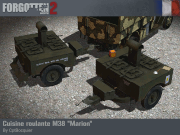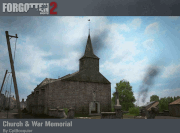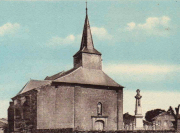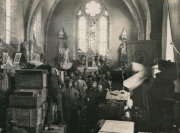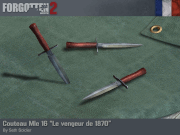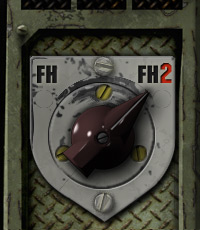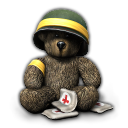 |
||
|
|
||
 |
||
|
ARCHIVES >>> 5/2021
31.05.2021 18:00 GMT
Hello and welcome back to another Forgotten Hope 2 update. Today we are featuring two entrenching tools that will be equipping our French soldiers. While you won't be able to dig with them, I'm sure you'll be able to find something to hit with them. Originally invented in 1869 by the Danish officer Mads Linnemann, this small entrenching shovel would go on to see widespread use across Europe, being adopted in some form or other by the Danes, Austrians, Germans, Romanians as well as the two nations of interest to us: the French as the Pelle-bêche modèle 1879 and the Russians as the MPL-50. Ours was made by Ashton. However, a small entrenching shovel struggles in harder ground and the French had taken note that the larger sapper tools did not always end up in the same place as infantry needing to dig in. The solution to this was to provide a mix of different small tools between various members of an infantry squad, and the Pelle-pioche Mle 1909 fulfilled this purpose. Ours was made by Cpt Bocquier. That's all for this week, but be sure to come back next time for another update. Until then, feel free to visit our Discord, our public forums, our Twitter, our subreddit, and/or Facebook pages to discuss this update and other news.
Bread and Wine by: Eat Uranium and Cpt. Bocquier 10.05.2021 18:00 GMT
Hello and welcome back to another Forgotten Hope 2 update. Today marks 81 years since the start of the German Invasion of France, and to mark this occasion we wanted to show off something a bit different. To that end we are showcasing two statics made by Cpt. Bocquier that will help make our French maps feel that bit more unique. They say an army marches on its stomach, so hopefully our new field kitchen will keep those bellies full. As for the church (because of course there is a church!), it is the highlight of an as yet unannounced map that we hope to show off soon. The Model 1916-1936 M38 field kitchen, known to the troops as Marion, was designed to serve around 200 soldiers near the battlefield. Truck towed and wood fuelled, the M38 field kitchen is the result of successive improvements of the earlier horse-drawn field kitchen Mle 1916. An update to the design in 1936 added a number of changes to the trailer; most notably new steel wheels with inflatable tyres to replace the wooden wheels, a new coupling system and a retractable chimney. In 1938, some minor internal changes were made. 3056 units of the Mle 1916, Mle 1916-1936 and M38 field kitchens were in the French army before the war. As the army mobilised an order for 2500 units plus 500 per month was made but the various manufacturers would never reach this level of production, delivering only 373 M38 before the armistice. The production of the M38 continued after the armistice to supply the German army. Many of these would subsequently fall into the hands of the US and Free French, who made good use of them. It would continue to see service after 1945, with an updated gasoline fired version put into production in the 1950s. Cpt. Bocquier made our Marion. This is a Catholic church constructed in 1657 on the foundations of an older 9th century church that had suffered heavily from the ravages of the Thirty Years war and the Fronde. At first the church consisted of a five-span nave with two side aisles, with a later extension to the nave adding a two-span choir which broke the orignal rectangular shape of the church. In 1817 one aisle and two spans of the nave were demolished, giving the church its unsymmetrical aspect. The parish church was dedicated to Virgin Mary, and had a contiguous cemetery. The building was used as a warehouse by the Germans during the First World War, and a war memorial was raised in front of the main entrance in the 1920s. In May 1940 the church was heavily damaged, with only the masonry still standing after the fight. After the war a new church was constructed in the same place and was inaugurated in January 1960. Once again, Cpt. Bocquier is responsible for this centrepiece static, helped along by the initial work of Tomtom. Last but not least: Slayer's tutorial series is now up to episode 16. You can see the full playlist here. That's all for this week, but be sure to come back next time for another update. Until then, feel free to visit our Discord, our public forums, our Twitter, our subreddit, and/or Facebook pages to discuss this update and other news.
La Strasbourgeoise by: Eat Uranium 02.05.2021 18:00 GMT
Hello and welcome back to another Forgotten Hope 2 update. Today we have a smaller update, with a render of a French trench knife. Also remember that Slayer's tutorial series has continued going in the background and is now sitting at episode 13. You can see the full playlist here. The Couteau Poignard Mle 1916 combat knife was developed in the middle of the First World War as a proper replacement to the various ad-hoc fighting knives that had been crafted for the French Army. A handy weapon, it was perfect for the tight confines of trench combat and would continue to be issued right up until the start of the Second World War. Also known as Le Vengeur de 1870 in reference to the Franco-Prussian War, these knives would also see use by the Germans after the fall of France. Ours was made by Seth Soldier. That's all for this week, but be sure to come back on Monday 10th May for another update to coincide with the start of the Invasion of France. Until then, feel free to visit our Discord, our public forums, our Twitter, our subreddit, and/or Facebook pages to discuss this update and other news.
|
|
|||||||||||||
 |
|||||||||||||||






















